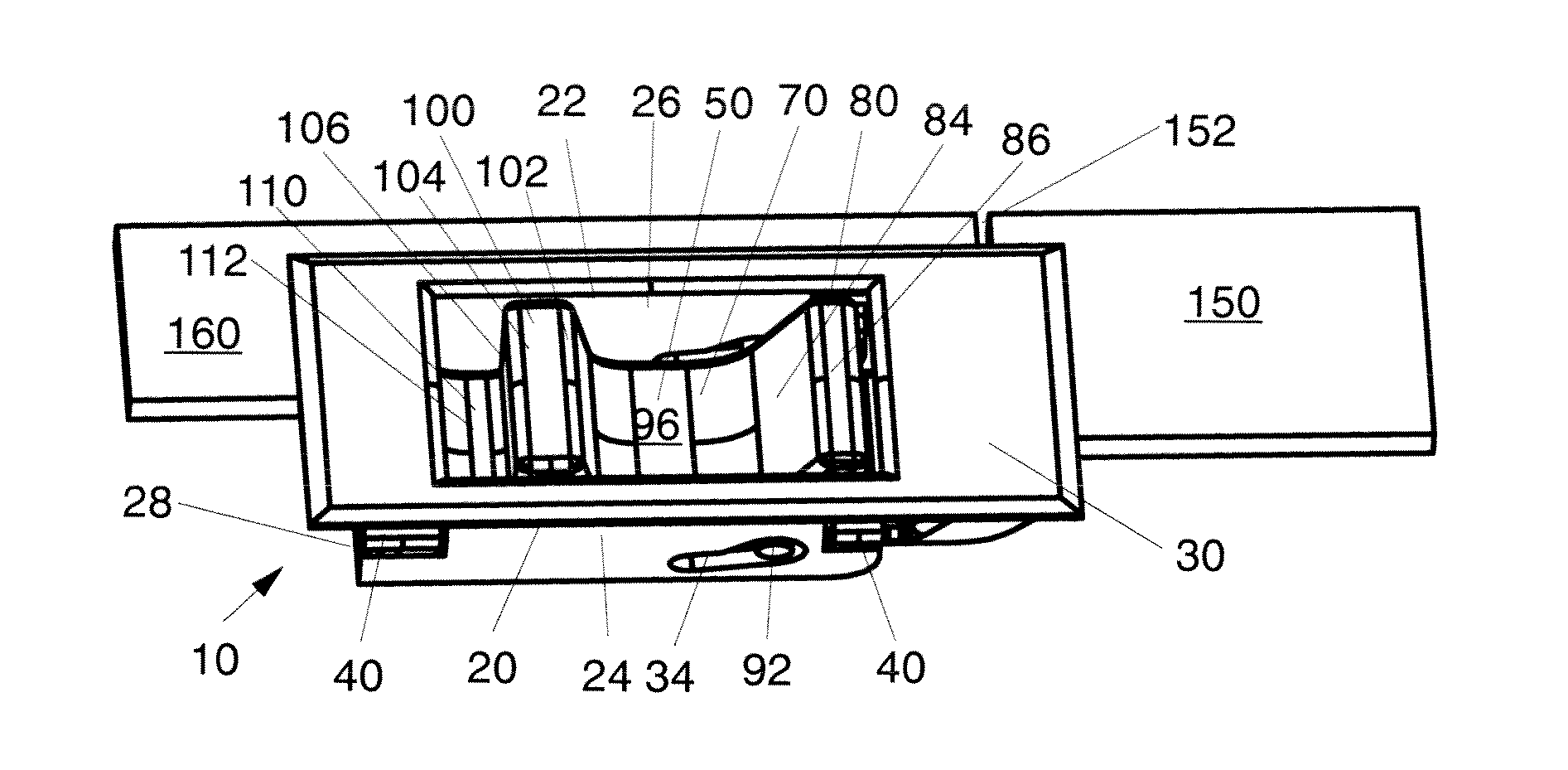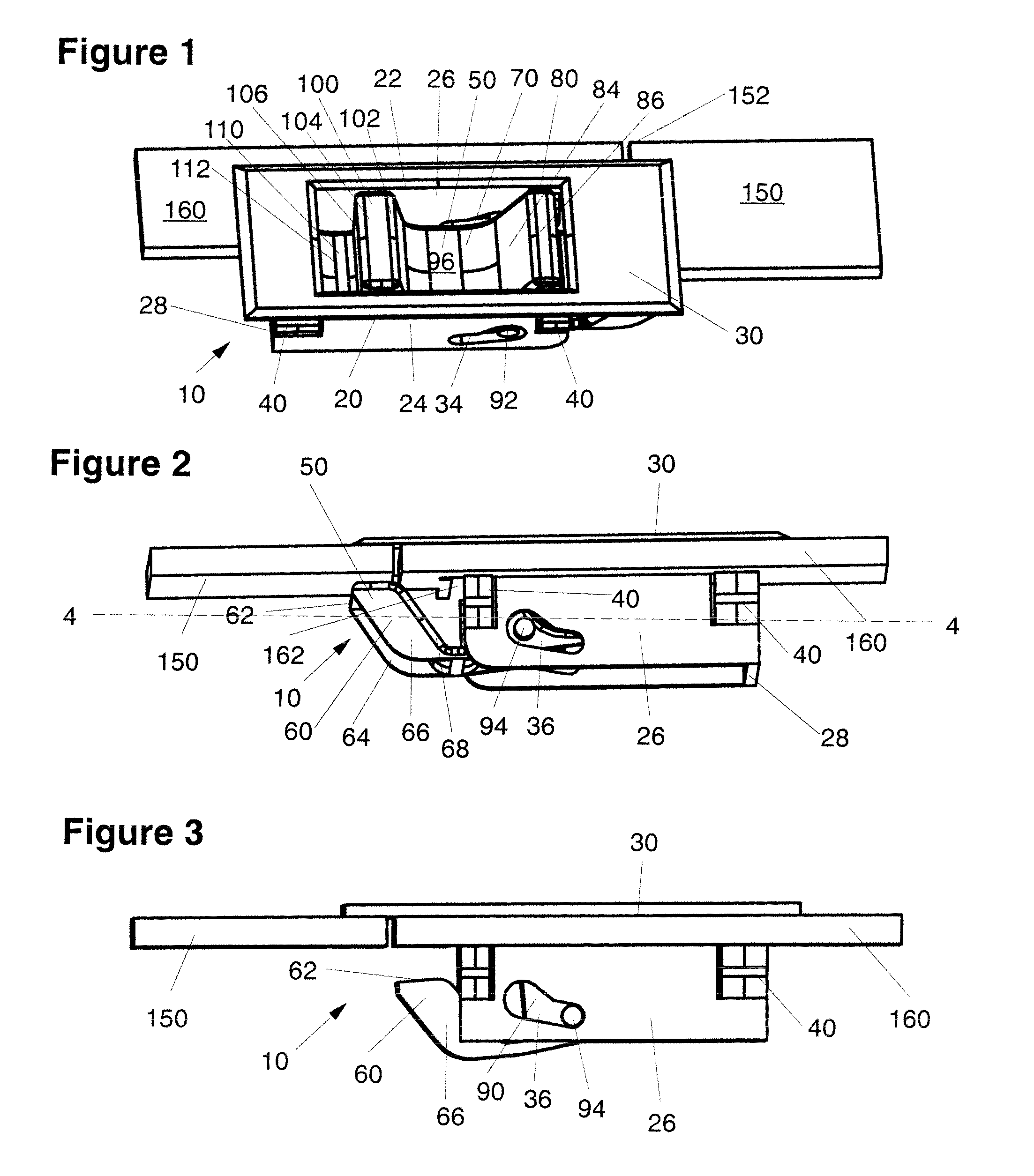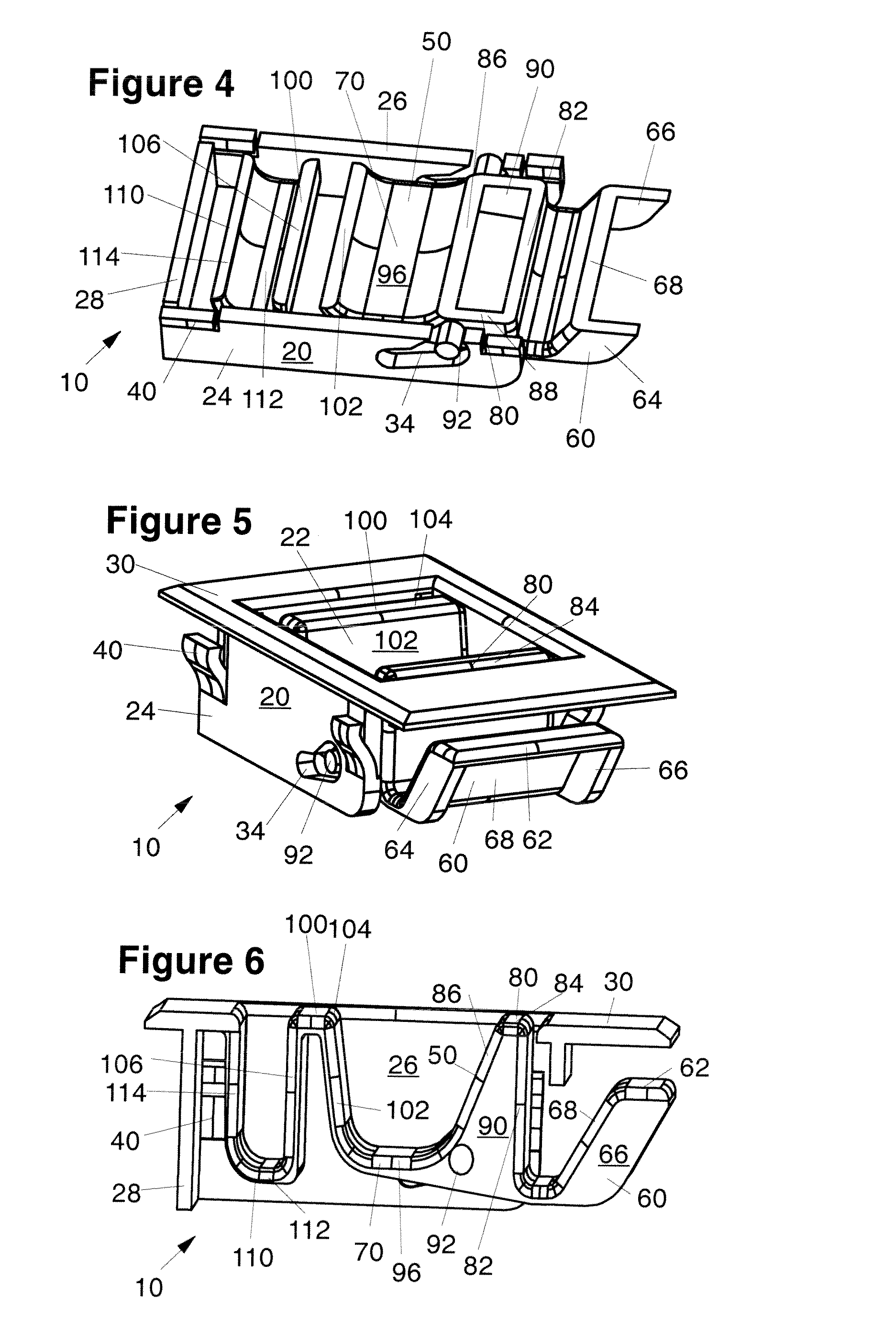Slide latch
a latch and sliding technology, applied in the direction of fastening means, carpet fasteners, mechanical devices, etc., can solve the problems of springs being subject to breakage, prior art latches with integrally molded spring elements may not have the same life expectancy as those using separate metal springs
- Summary
- Abstract
- Description
- Claims
- Application Information
AI Technical Summary
Benefits of technology
Problems solved by technology
Method used
Image
Examples
Embodiment Construction
[0029]Referring now to the drawings in detail, wherein like reference numerals indicate like elements throughout the several views, there is shown in FIG. 1 a perspective view of a slide latch 10 of the present invention, the slide latch 10 being shown mounted in a panel or door 160, and in a closed or latched position securing the panel 160 to a frame 150, the panel 160 and frame 150 being shown in a fragmentary section thereof. The latch 10 is preferably formed as a single component by a molding process from a polymeric material having substantial resistance to fatigue from cyclic loading. A particularly preferred polymeric material is acetal resin, available as Delrin® acetal resin from E.I. du Pont de Nemours, Wilmington, Del.
[0030]The latch 10 includes a latch body 20 and a generally rectangular plate 30 from which the latch body 20 downwardly extends. A central, generally rectangular well 22 extends through the plate 30 and into the latch body 20. The latch 10 also includes an...
PUM
 Login to View More
Login to View More Abstract
Description
Claims
Application Information
 Login to View More
Login to View More - R&D
- Intellectual Property
- Life Sciences
- Materials
- Tech Scout
- Unparalleled Data Quality
- Higher Quality Content
- 60% Fewer Hallucinations
Browse by: Latest US Patents, China's latest patents, Technical Efficacy Thesaurus, Application Domain, Technology Topic, Popular Technical Reports.
© 2025 PatSnap. All rights reserved.Legal|Privacy policy|Modern Slavery Act Transparency Statement|Sitemap|About US| Contact US: help@patsnap.com



